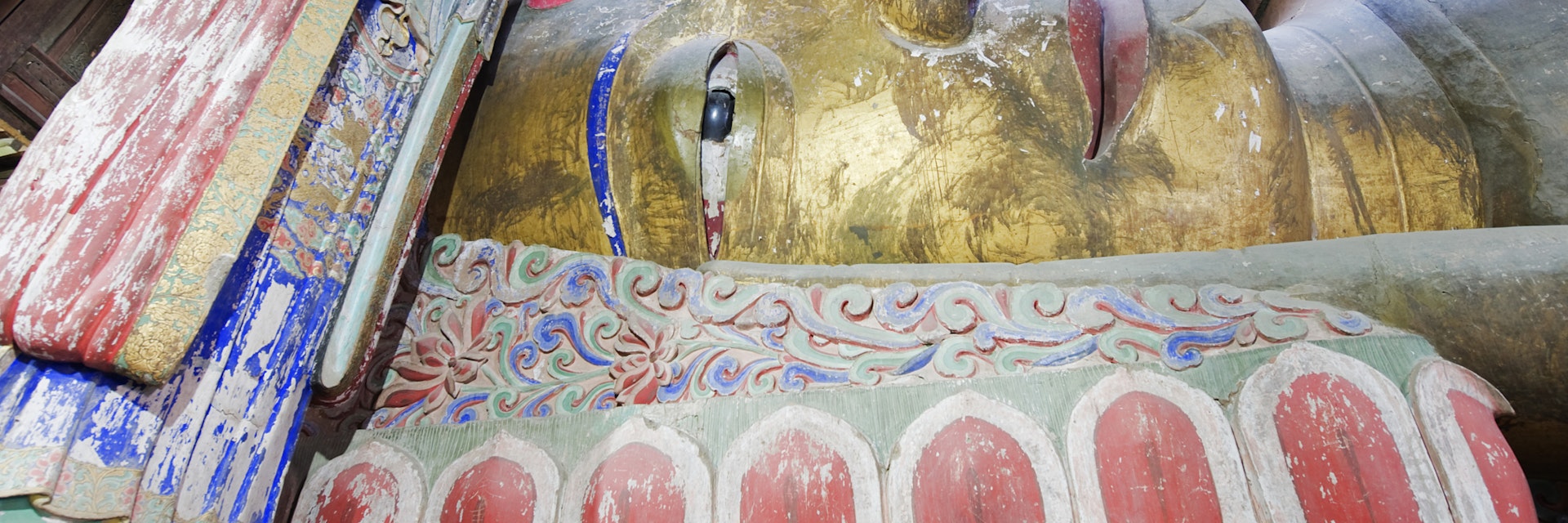Originally dating to 1098 (Western Xia dynasty), this stunning temple contains an astonishing 35m-long sleeping Buddha – China’s largest of this variety and among the biggest clay and wood reclining Buddhas in Asia – surrounded by mouldering arhats (Buddhists who have achieved enlightenment) and Qing dynasty murals. The hall in which Buddha lies is one of the few wooden structures from this era still standing in the land; note the panels of the main doors to the hall and their ancient paintwork.
There is a gallery above the reclining Buddha, which you sadly cannot climb. No photography is allowed in the main hall. The former Wansheng Hall further on now contains an exhibition showcasing Buddhist artefacts as well as an explanation of the history of the temple and the town (in Chinese only) and some fascinating models of how the Big Buddha statue was constructed over a wooden frame. A further hall is devoted to a display of golden Buddhist sutras associated with the temple. At the very rear rises up an impressive white clay stupa (土塔, tǔtǎ) dating from the Ming dynasty, similar in style to Miaoying Temple White Dagoba in Beijing.
The Shanxi Guild Hall at the northeast corner of the temple is also worth investigating. Dating to 1724, this Qing-era complex was used as a meeting place and includes rare intact wooden stage and platform viewing areas.
To reach the temple from the drum tower, head south on Nan Dajie for about 1km and turn right along Minzhu Xijie before heading left down Dafosi Xiang to the ticket office which is on the right (the temple entrance is a bit further down on the left).


